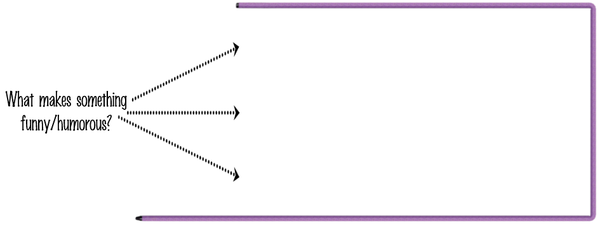| << Chapter < Page | Chapter >> Page > |
1. Read through the text labelled ‘Teaching children to speak up in Court’ and write down 3 complete sentences in which direct speech, written in inverted commas, is used. Use colour to identify the speaker’s actual words.
2. Each example below contains direct speech. Fill in the missing punctuation marks (such as “ ” ; capital letters ; ! ? . , ):
We desperately need sponsorship in order to be able to continue with this
3. What is Judith saying to Lita? Complete the speech bubbles.
4. Rewrite these speech bubbles in direct speech.


| LO 4.1.1 |
INDIRECT SPEECH
(retelling or reporting what someone else has said)
To simplify the process of converting direct to indirect speech, remember the following rules:
|
|
| that comes after the action word / or the words whether / if in the case of a question |
|
|
5. Change the following from direct to indirect speech by filling in the missing words:
6. In the task on Direct Speech, you were requested to find and copy down three sentences from the text. Your challenge now is to attempt to change the same sentences into Indirect Speech.
| LO 4.4.2 |

Work together with a partner in this task:
| Who are the characters in the cartoon? | |
| What happens in your cartoon? | |
| What makes it funny? | |
| Do you find it funny?- and your partner? | |
| Why? |
| LO 3.2.1 |



| LO 3.3 |
Study the given jokes and cartoons. Rate them from 1 (least funny) to 5 (most humorous). Motivate why . . .

| LO 3.3 |
Can you be a comedian?Write down a funny (and clean!) joke.
| LO 3 |
| READING AND VIEWING The learner is able to read and view for information and enjoyment, and respond critically to the aesthetic, cultural and emotional values in texts. |
| Assessment Standards(ASs) |
| We know this when the learner: |
| 3.1 reads and responds critically to a variety of South African and international fiction and non-fiction (journals, poetry, novels, short plays, newspapers, text books, etc.): |
| 3.1.1 reads aloud and silently, adjusting reading strategies to suit the purpose and audience; |
| 3.1.2 uses appropriate reading and comprehension strategies (skimming, and scanning, predictions, contextual clues, inferences, monitoring comprehension, etc.); |
| 3.2 views and discusses various visual and multi-media texts: |
| 3.2.1 interprets and discusses message; |
| 3.3 explains interpretation and overall response to text, giving reasons based on the text or own experience. |
| LO 4 |
| WRITING The learner is able to write different kinds of factual and imaginative texts for a wide range of purposes. |
| We know this when the learner: |
| 4.1 writes different kinds of texts for different purposes and audiences: |
| 4.1.1 writes for personal, exploratory, playful, imaginative and creative purposes; |
| 4.2 develops and organises ideas through a writing process: |
| 4.2.1 brainstorms ideas for a topic and develops ideas by consulting a wide variety of sources, selecting relevant information, and organising the ideas using strategies such as mind maps, flow charts, grids, etc.; |
| 4.2.2 produces a first draft with awareness of the central idea, and appropriate language and conventions for the specific purpose and audience; |
| 4.2.3 revises work, focusing on improving the language, organisation and style, using feedback from classmates and/or teacher; |
| 4.2.6 produces a final version incorporating feedback from classmates and/or teacher; |
| 4.2.7 reflects on and critically evaluates the final product on own, and with classmates and teacher. |
| 4.4 applies knowledge of language at different levels: |
| 4.4.2 sentence level. |

Notification Switch
Would you like to follow the 'English home language grade 6' conversation and receive update notifications?